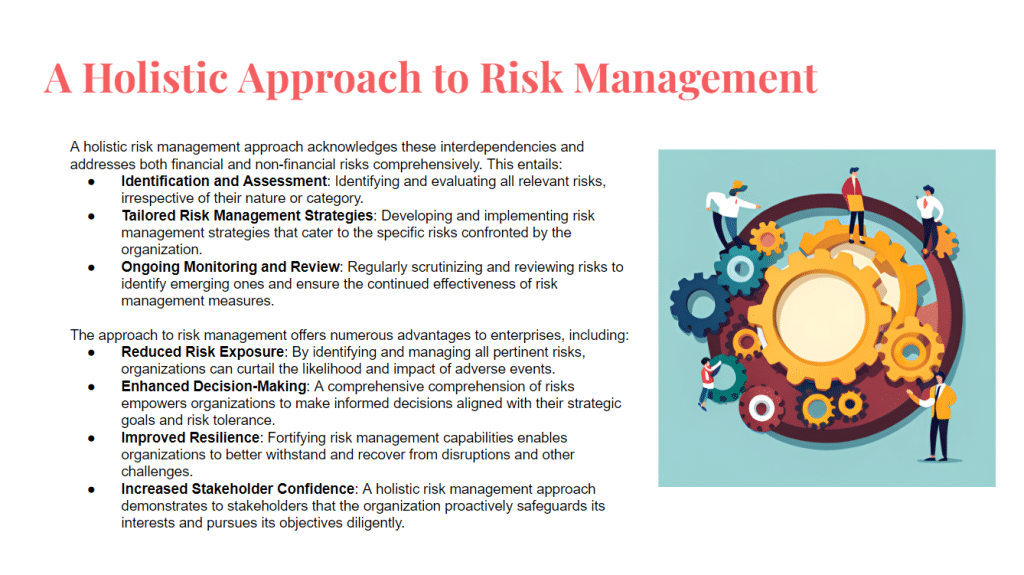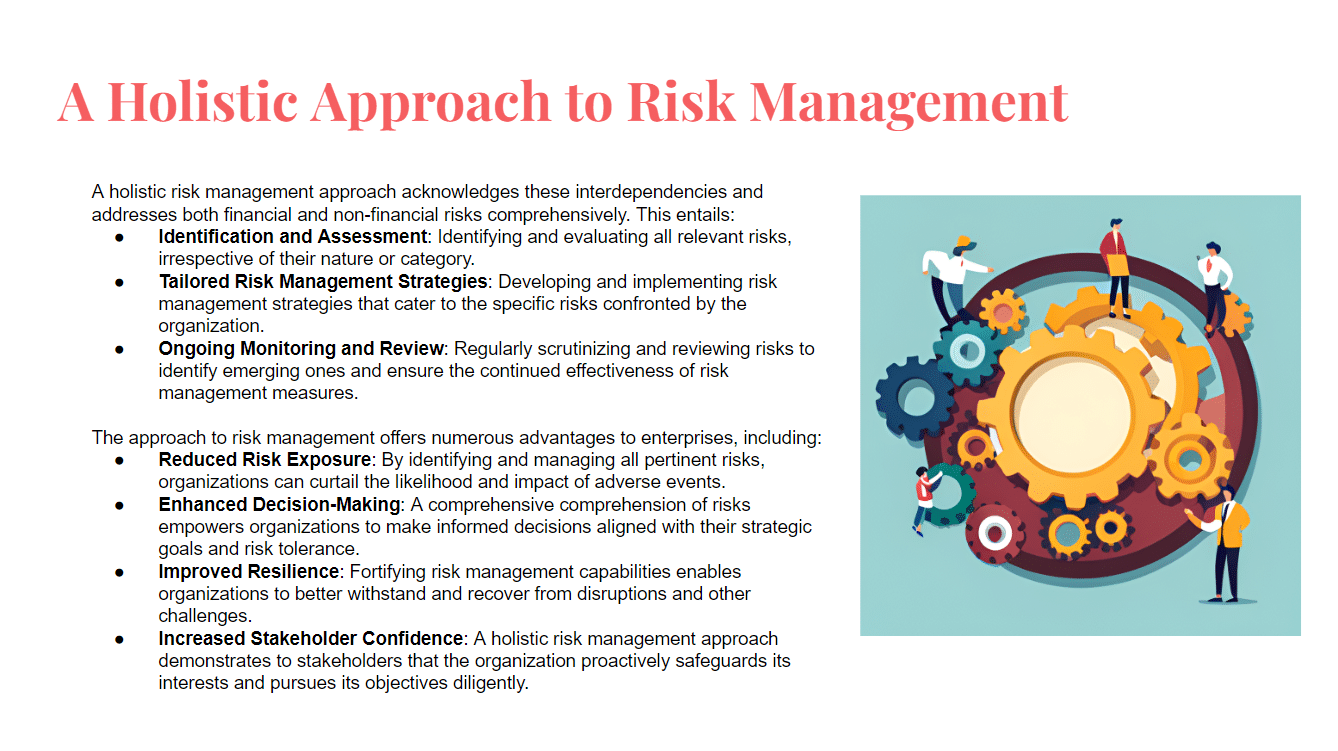Within the realm of enterprises, the term “risk” denotes the potential for events or circumstances to adversely affect an organization’s ability to achieve its multifaceted objectives. These objectives can encompass financial, operational, strategic, or reputational facets. Risks may emanate from diverse sources, whether they are internal or external, and they can manifest in various forms and magnitudes. For businesses to safeguard their interests, bolster their decision-making, and pursue their goals effectively, adept risk management is imperative. It entails the identification, assessment, prioritization, and mitigation of risks.
Distinguishing Financial and Non-Financial Risks
To navigate the intricate landscape of risks, organizations often categorize them into two overarching domains: financial risks and non-financial risks. This categorization serves as a valuable tool for organizations, enabling them to differentiate between the types of risks they encounter and tailor their risk management strategies accordingly. Let’s delve into the essence of these two categories:
Financial Risks
Financial risks primarily revolve around their potential to disrupt an organization’s financial stability, profitability, and overall financial well-being. They are typically quantifiable in monetary terms and hold central importance for financial institutions and businesses alike. Common financial risks encompass:
- Credit Risk: This pertains to the risk that borrowers or counterparties might fail to meet their financial obligations, leading to losses on loans, investments, or trade receivables.
- Market Risk: Market risk is associated with the fluctuations within financial markets, encompassing changes in interest rates, exchange rates, and asset prices. These fluctuations can affect the value of investments and financial instruments.
- Liquidity Risk: Liquidity risk pertains to the danger of not possessing sufficient cash or readily marketable assets to fulfill financial obligations as they fall due, potentially culminating in insolvency.
- Operational Risk: Although operational risks often possess non-financial attributes, they can have financial repercussions. Operational risks relate to failures within internal processes, systems, human resources, or external events, which can lead to financial losses or damage an organization’s reputation.
- Compliance and Regulatory Risk: This risk category extends beyond its financial implications to encompass non-financial aspects such as regulatory reporting, data protection, and ethical compliance. It encompasses the risk of financial penalties, legal actions, or harm to an organization’s reputation arising from non-compliance with laws, regulations, or industry standards.
- Strategic Risk: Strategic risks are intertwined with an organization’s strategic decisions and goals. These risks can influence financial performance if strategic initiatives fail to yield expected results.
Non-Financial Risks
Non-financial risks encompass a broader spectrum of potential disruptions that can impact an organization’s operations, reputation, and overall welfare. These risks are often characterized by their qualitative nature and may not deliver immediate or easily quantifiable financial repercussions. Common non-financial risks encompass:
- Operational Risk: While operational risks can indeed entail financial consequences, their core pertains to the hindrances in processes, technology, human resources, and external events that can impede an organization’s daily operations.
- Reputational Risk: Reputational risk pertains to the threat of harm to an organization’s reputation stemming from adverse events, negative public perception, ethical breaches, or crisis situations. Damage to reputation can erode customer trust and brand value.
- Cybersecurity and IT Risk: These risks encompass vulnerabilities tied to data breaches, cyberattacks, IT system failures, and technology vulnerabilities. They have the potential to disrupt operations, compromise sensitive information, and inflict reputational harm.
- Supply Chain Risk: Risks associated with disruptions within the supply chain, such as natural disasters, geopolitical factors, and logistical challenges. These disruptions can affect product availability and production.
- Environmental and Sustainability Risk: These risks emanate from environmental factors, regulatory shifts, and sustainability concerns. They can affect an organization’s capacity to meet evolving environmental standards and societal expectations.
- Compliance and Regulatory Risk: Beyond their financial implications, compliance risks also encompass non-financial dimensions such as regulatory reporting, data protection, and ethical compliance.
Categorizing Risks for Tailored Strategies
Segmenting risks into financial and non-financial categories equips organizations with a framework to allocate resources and formulate strategies customized to manage and mitigate each type effectively. While financial risks often necessitate the employment of financial tools and metrics for analysis, non-financial risks demand qualitative assessments and proactive measures to safeguard an organization’s reputation, sustainability, and long-term prosperity. A holistic risk management approach addresses both financial and non-financial risks, ensuring comprehensive protection and resilience.
A Holistic Approach to Risk Management
Although financial and non-financial risks are frequently categorized separately, they are interconnected and can wield a cascading influence on an organization. For instance, a data breach (a non-financial risk) can cascade into financial losses via fines and litigation while also tarnishing an organization’s reputation. Likewise, a natural disaster (an environmental risk) can disrupt supply chains and operations, leading to financial losses and other adverse consequences.

Conclusion
In the intricate and ever-evolving milieu of contemporary business, a holistic approach to risk management stands as a requisite for enterprises of all sizes. By recognizing, assessing, prioritizing, and mitigating all pertinent risks, organizations can curtail their risk exposure, elevate decision-making, bolster resilience, and foster stakeholder confidence.




